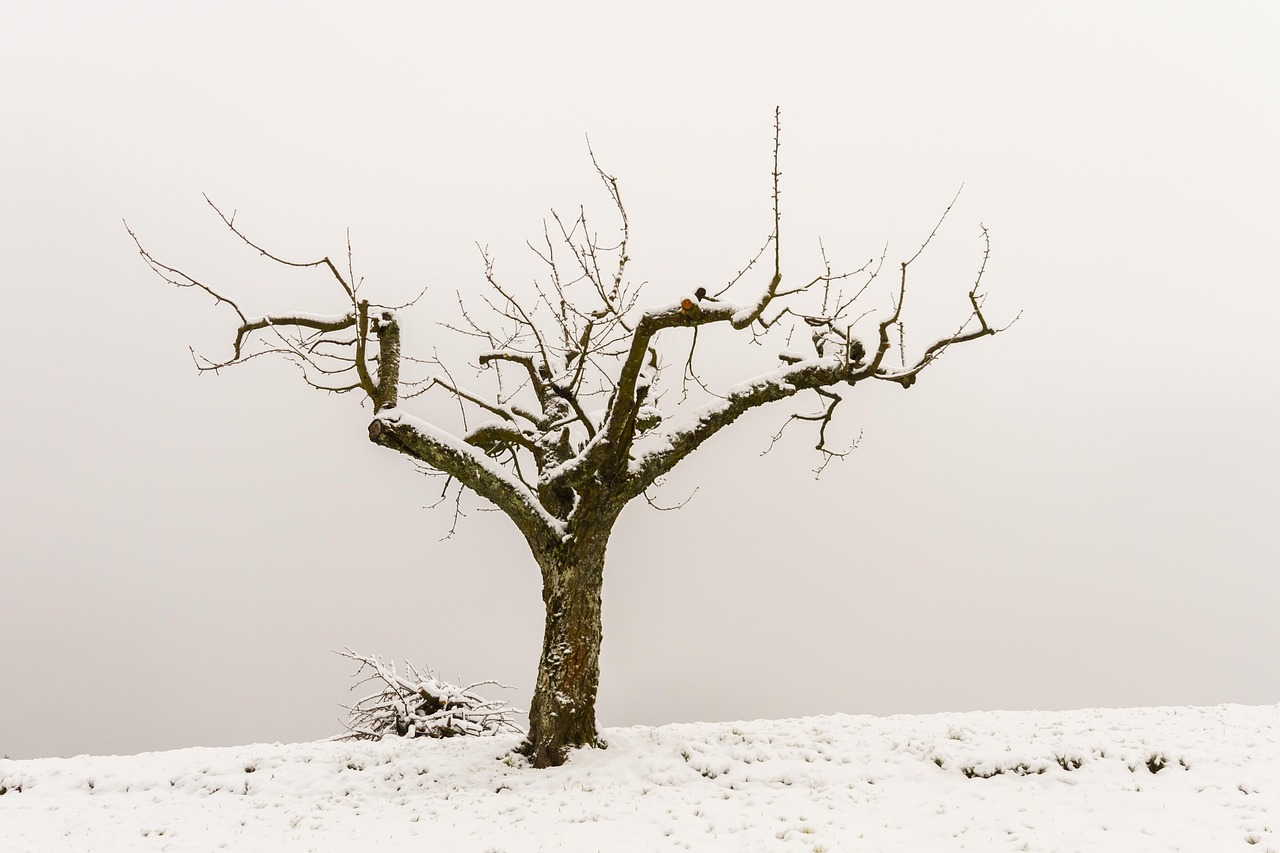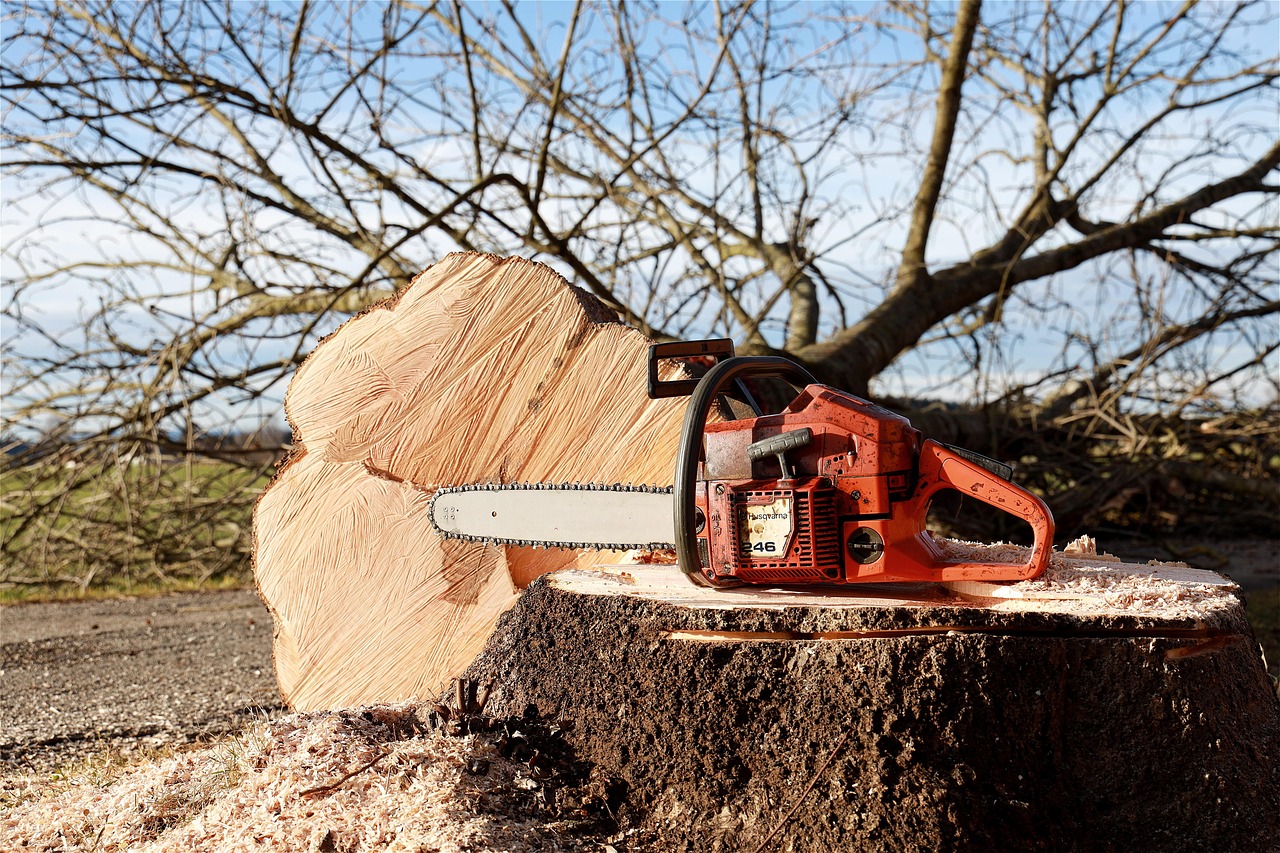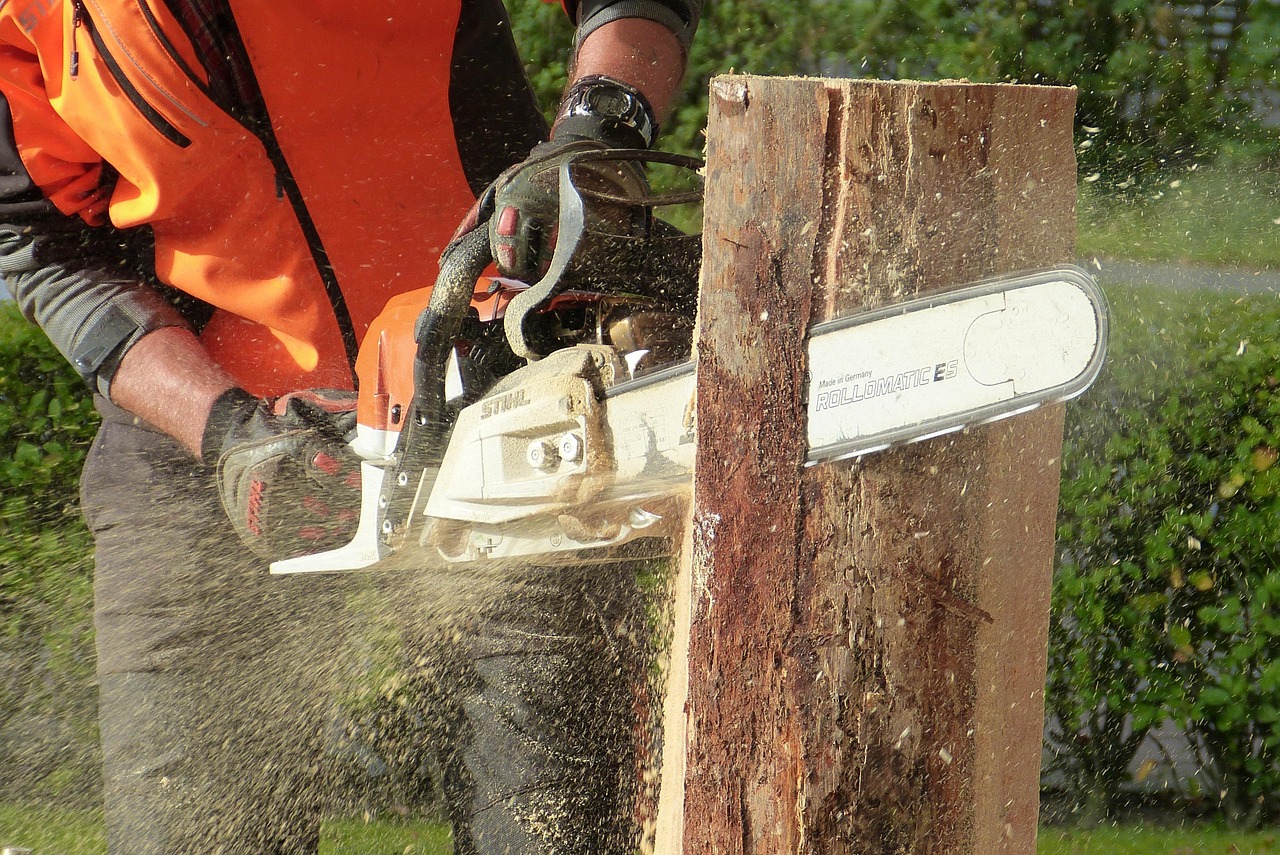Tree pruning services are essential for maintaining the health, aesthetics, and safety of trees in residential and commercial landscapes. Local providers offer tailored solutions to ensure trees thrive while mitigating risks associated with overgrown or damaged branches.
Proper tree care is crucial for both aesthetics and safety. Trees can enhance property value, provide shade, and improve air quality. However, without regular pruning, they can become overgrown or suffer from disease, leading to potential hazards. Understanding the basics of tree pruning and the services offered by local providers can help property owners make informed decisions.

Tree pruning involves selectively removing branches to improve the tree’s structure and health. This practice can encourage new growth, enhance sunlight exposure, and prevent disease. Additionally, pruning helps manage the size of trees, minimizing risks associated with falling branches or obstructing views.
Benefits of Tree Pruning
Engaging in regular tree pruning offers numerous benefits. Here are some key advantages:
- Health Improvement: Pruning eliminates dead or diseased branches, promoting better air circulation and sunlight penetration.
- Structural Integrity: Proper pruning strengthens the tree’s structure, reducing the risk of branch failure during storms.
- Aesthetic Appeal: Well-pruned trees improve the overall appearance of landscapes, enhancing property value.
- Safety: Removing hazardous branches prevents potential injuries or property damage caused by falling limbs.
- Encouraging Growth: Pruning stimulates new growth, leading to a healthier and more vibrant tree.
The timing and technique of tree pruning play significant roles in achieving these benefits. Generally, late winter or early spring is considered the best time for pruning most deciduous trees. This timing helps minimize stress on the tree while encouraging robust growth in the upcoming growing season.

Types of Pruning Services
Local providers typically offer various types of tree pruning services to cater to different needs. Some common types include:
- Crown Thinning: This method involves selectively removing branches to reduce density, improving light penetration and air circulation.
- Crown Raising: This technique removes lower branches to provide clearance for pedestrians and vehicles while enhancing visibility.
- Crown Reduction: Crown reduction entails shortening branches to reduce the overall size of the tree, making it safer in urban settings.
- Deadwooding: This service focuses on removing dead or dying branches to maintain tree health and aesthetic appeal.
- Tree Topping (not recommended): This is an aggressive technique that involves cutting back large sections of the tree, often leading to health issues. Most professionals advise against this practice.
Selecting a Local Tree Pruning Service
When choosing a local tree pruning service, several factors should be considered to ensure quality care for your trees:
- Experience and Reputation: Look for providers with a strong track record and positive customer reviews. Experienced arborists understand the nuances of tree health and care.
- Certifications: Check if the service employs certified arborists who have completed training in tree care and safety practices.
- Insurance: Ensure the company has liability insurance to protect you from any potential accidents during the job.
- Estimates: Obtain written estimates from multiple providers to compare prices and services offered.
- Equipment: Inquire about the tools and equipment used by the service. Proper equipment ensures safety and efficiency during the pruning process.
Engaging a professional for tree pruning not only enhances the health and beauty of trees but also provides peace of mind knowing that trained experts are managing the work. Investing in these services can save property owners significant costs associated with tree removal or damage repair in the future.

In summary, understanding tree pruning services helps local providers communicate the importance of regular maintenance. With the right knowledge and provider, property owners can ensure their trees remain healthy and beautiful for years to come.
Understanding Tree Pruning Techniques
Tree pruning involves various techniques, each designed for specific outcomes. Knowing these techniques can help property owners understand what to expect from pruning services. Here are some of the most common techniques used by professionals:
- Selective Pruning: This technique focuses on removing specific branches to improve the tree’s shape and health without altering its overall structure significantly.
- Thinning: This method reduces the density of a tree’s branches by removing the less healthy or crowded branches, allowing better airflow and light penetration.
- Heading: This involves cutting back a branch to a bud or lateral branch. Heading helps control the size and shape of the tree.
- Pinching: This technique is primarily used on young trees or shrubs, where the tips of new growth are pinched off to encourage bushier growth.
- Reduction: This technique shortens branches to reduce the height or spread of a tree. It is usually done for trees that might interfere with power lines or buildings.
Each technique has its own advantages and is suited for different types of trees and growth conditions. Consulting with a professional can help determine the best approach for specific trees.

Seasonal Considerations for Pruning
The timing of tree pruning is crucial for achieving optimal results. Different trees have different optimal times for pruning, influenced by their growth cycles. Below are some seasonal considerations:
| Season | Recommended Actions |
|---|---|
| Spring | Ideal for pruning flowering trees after they bloom. Avoid heavy pruning during active growth as it could stress the tree. |
| Summer | Best for minor pruning and maintenance. Remove dead or damaged branches to promote health. |
| Fall | Generally not recommended as trees enter dormancy. Some exceptions exist for specific species. |
| Winter | The best time for most deciduous trees. They are dormant, which minimizes stress and allows for healthier growth in spring. |
Understanding these seasonal guidelines can help property owners schedule their pruning services effectively, ensuring maximum benefits for their trees.
Pests and Diseases Affecting Trees
Tree health can be compromised by pests and diseases that thrive if trees are not properly maintained. Regular pruning helps manage these issues by removing affected branches and improving air circulation. Here are some common pests and diseases that can affect trees:
- Aphids: These small insects can weaken trees by sucking sap from leaves and stems, leading to stunted growth and leaf drop.
- Scale Insects: Scale insects attach themselves to tree bark, feeding on the sap and causing damage that may lead to stress or death.
- Fungal Diseases: Conditions like powdery mildew or root rot can severely affect tree health. Pruning removes infected areas and helps prevent the spread of disease.
- Bacterial Blight: This disease can cause wilting and dieback in branches, particularly in young trees. Prompt pruning can help manage its spread.
Awareness of these potential threats can lead to timely action, reducing the likelihood of significant damage to trees.
The Role of Arborists in Tree Care
Professional arborists play a critical role in tree care, including pruning services. Arborists are trained specialists who understand tree biology, health, and maintenance practices. Here are some key responsibilities of arborists:
- Assessment: Arborists evaluate the condition of trees and identify any health issues, recommending appropriate care strategies.
- Pruning: They use proper techniques to prune trees effectively while minimizing stress and promoting healthy growth.
- Pest Management: Arborists can identify pest infestations and recommend treatments to protect tree health.
- Planting Advice: They provide guidance on selecting appropriate species for planting based on local conditions and landscape needs.
- Emergency Response: Arborists can respond to urgent situations, such as storm-damaged trees that pose safety risks.
Hiring a certified arborist ensures that trees receive expert care tailored to their specific needs, ultimately promoting longevity and health.
Cost Factors in Tree Pruning Services
The cost of tree pruning services can vary widely based on several factors. Understanding these factors can help property owners budget accordingly. Here are the primary considerations that influence pricing:
- Tree Size: Larger trees typically require more time and equipment, leading to higher costs.
- Type of Pruning: Different techniques may involve varying levels of complexity, affecting overall pricing.
- Location: Accessibility of the tree can impact labor costs. Trees in hard-to-reach places may incur additional charges.
- Health Condition: Trees requiring extensive care due to disease or damage may increase labor time and costs.
- Seasonality: Prices may fluctuate based on demand during peak seasons for tree care services.
By considering these factors, property owners can better understand the potential costs associated with tree pruning services and plan their budgets effectively.
Safety Practices in Tree Pruning
Tree pruning can be a hazardous task if not executed with proper safety measures. Professionals in the field understand the risks and follow strict protocols to ensure their safety and that of the surrounding environment. Here are essential safety practices observed during tree pruning:
- Personal Protective Equipment (PPE): Arborists should wear appropriate PPE, including hard hats, gloves, goggles, and steel-toed boots to protect against falling debris and sharp tools.
- Tool Maintenance: Regularly inspecting and maintaining tools ensures they function correctly, reducing the risk of accidents.
- Proper Techniques: Arborists are trained in safe pruning techniques, such as using the three-cut method to prevent bark tearing.
- Clear Work Area: Ensuring that the area below the tree is clear of people, pets, and obstacles helps prevent accidents during pruning.
- Emergency Preparedness: Arborists should have a plan for medical emergencies, including first-aid kits readily available on-site.
Following these safety practices not only protects the workers but also minimizes risks to property and nearby individuals.
Environmental Impact of Tree Pruning
While tree pruning is essential for maintaining tree health and safety, it also has an environmental impact that should be considered. Understanding this impact can help guide responsible pruning practices. Here are some key points regarding the environmental effects:
- Biodiversity Support: Proper pruning can enhance biodiversity by promoting healthy trees that support various wildlife species.
- Carbon Sequestration: Healthy trees absorb carbon dioxide, contributing to climate change mitigation. Pruning helps ensure trees remain robust and effective in this role.
- Soil Health: Healthy trees contribute to soil stability and fertility. Effective pruning promotes tree vitality, aiding in soil conservation.
- Pest Control: Regular maintenance prevents tree diseases and pest infestations, reducing the need for chemical treatments that can harm the environment.
By being mindful of these environmental aspects, arborists can implement sustainable pruning practices that benefit both trees and the ecosystem.
Common Myths About Tree Pruning
Misinformation about tree pruning can lead to harmful practices and poor tree care. It is essential to debunk common myths surrounding tree pruning to promote better understanding among property owners. Here are several prevalent myths:
- Myth 1: Trees Should Be Topped for Safety: Topping can harm trees and increase the risk of disease. Proper pruning techniques are recommended instead.
- Myth 2: Pruning Is Only Necessary in Spring: While spring is a popular time, winter pruning can also be beneficial for specific tree species.
- Myth 3: All Trees Can Be Pruned Similarly: Different species require different pruning techniques. Understanding the specific needs of each type is crucial.
- Myth 4: Pruning Is Harmful: When done correctly, pruning enhances tree health rather than harming it.
Addressing these myths helps property owners make informed decisions regarding tree care and maintenance.
Maintaining Trees Between Pruning Services
Regular maintenance between professional pruning services is essential for keeping trees healthy. Property owners can adopt several practices to support their trees throughout the year:
- Watering: Adequate watering is vital, particularly during dry spells. Young trees especially need consistent moisture to develop strong root systems.
- Mulching: Applying mulch around the base of trees helps retain moisture, regulate soil temperature, and suppress weeds.
- Fertilization: Providing appropriate nutrients through fertilization can promote healthy growth, especially in nutrient-deficient soils.
- Pest Monitoring: Regularly inspect trees for signs of pest infestations or diseases. Early detection allows for timely intervention.
- Cabling and Bracing: For trees with structural weaknesses, cabling and bracing can provide additional support until a professional can assess the situation.
Implementing these maintenance practices ensures that trees remain healthy and vibrant between professional pruning sessions, ultimately reducing the need for extensive interventions.
The Importance of Tree Health Assessment
A comprehensive tree health assessment is critical in determining the appropriate pruning techniques and timing. Arborists use various methods to evaluate tree health effectively. Some key aspects of a health assessment include:
- Visual Inspection: Arborists conduct thorough visual checks to identify signs of disease, insect damage, or structural issues.
- Soil Testing: Soil quality plays a vital role in tree health. Testing can determine nutrient levels and pH balance, guiding fertilization practices.
- Crown Assessment: The condition of the crown provides insights into the overall health of the tree. A healthy crown typically indicates a thriving tree.
- Root Health Evaluation: Inspecting roots is essential for understanding the stability and nutrient uptake capabilities of the tree.
A thorough health assessment allows arborists to create tailored care plans that promote long-term tree health and resilience against pests and diseases.
Advanced Tree Care Practices
In addition to regular pruning and maintenance, there are advanced tree care practices that can enhance the health and longevity of trees. These practices can be especially important for older trees or those in urban environments. Some key advanced techniques include:
- Root Pruning: This technique involves cutting back roots to encourage new growth and improve the overall health of the tree. It is typically performed during the dormant season and requires careful planning to avoid damaging the tree.
- Soil Aeration: Compacted soil can hinder root growth and nutrient uptake. Aerating the soil around the tree enhances water infiltration and root development, leading to healthier trees.
- Integrated Pest Management (IPM): This approach combines various management strategies to control pests in an environmentally friendly way. IPM focuses on prevention, monitoring, and control techniques that minimize harm to beneficial organisms.
- Mulching Techniques: Applying organic mulch around trees can provide nutrients, retain moisture, and suppress weeds. However, it is important to apply mulch correctly to avoid issues such as trunk rot.
- Tree Cabling and Bracing: For trees with structural weaknesses, cabling and bracing can provide additional support. This technique helps prevent branch failure during storms or high winds.
Implementing these advanced practices can significantly improve tree health and resilience, ensuring that they thrive in their environments for many years.
Community Benefits of Tree Pruning
The benefits of tree pruning extend beyond individual property owners. Healthy trees contribute positively to communities in various ways:
- Improved Air Quality: Trees play a vital role in filtering pollutants from the air, contributing to a healthier environment for all residents.
- Climate Regulation: Trees help moderate temperatures by providing shade and reducing urban heat islands, making communities more comfortable during hot weather.
- Aesthetic Value: Well-maintained trees enhance the beauty of neighborhoods, contributing to higher property values and attracting visitors.
- Biodiversity Support: Urban trees provide habitats for various wildlife species, promoting biodiversity even in densely populated areas.
- Community Engagement: Tree care initiatives can foster community involvement and education, encouraging residents to participate in local environmental efforts.
Recognizing these community benefits can motivate local governments and organizations to invest in tree pruning and maintenance programs that enhance public spaces.
Choosing the Right Tree Species for Pruning
The choice of tree species significantly affects pruning techniques and outcomes. Different species have unique growth patterns, lifespans, and care requirements. When selecting trees for your landscape, consider the following factors:
- Growth Rate: Fast-growing species may require more frequent pruning compared to slower-growing varieties. Understanding growth rates helps plan maintenance schedules effectively.
- Size at Maturity: Choose species that fit the intended planting space. Trees that grow too large for their location may require excessive pruning or pose risks to structures.
- Disease Resistance: Some species have inherent resistance to common pests and diseases, reducing the need for extensive interventions. Selecting resilient species can lead to lower maintenance costs over time.
- Aesthetic Qualities: Consider how the tree’s form and foliage will complement the landscape. Pruning can enhance these qualities but starting with an appealing species is essential.
By selecting the right tree species for specific locations and purposes, property owners can minimize future maintenance needs while maximizing beauty and health.
Final Thoughts
Tree pruning is a vital aspect of maintaining healthy landscapes and ensuring the safety of both people and property. Understanding the various techniques, timing considerations, and health assessments allows property owners to make informed decisions about their trees. The importance of hiring certified arborists cannot be overstated; their expertise ensures that trees receive the care they need to thrive.
The benefits of tree pruning extend beyond individual properties, contributing to community well-being through improved air quality, climate regulation, and aesthetic appeal. By adopting advanced care practices and recognizing the value of proper tree selection, property owners can foster sustainable landscapes that flourish for generations.
Ultimately, investing in tree care services is an investment in the future. Healthy trees enhance property values, contribute positively to the environment, and enrich our communities. Whether you are a homeowner or a local provider of tree services, understanding these principles will help you cultivate a thriving green space.
